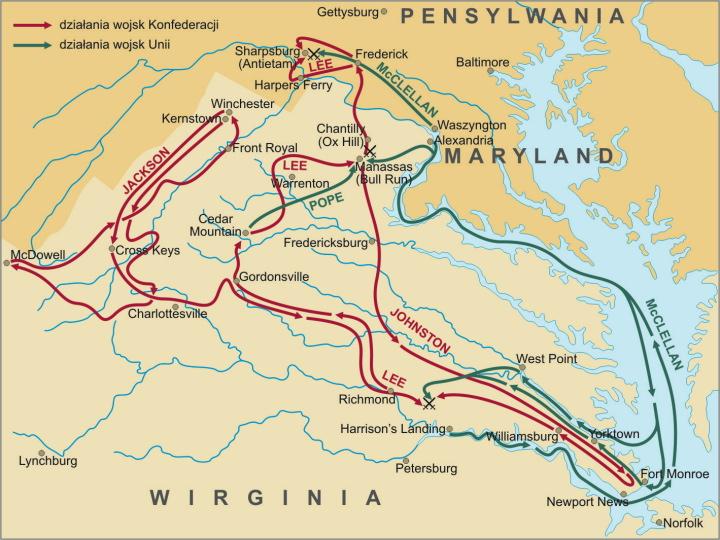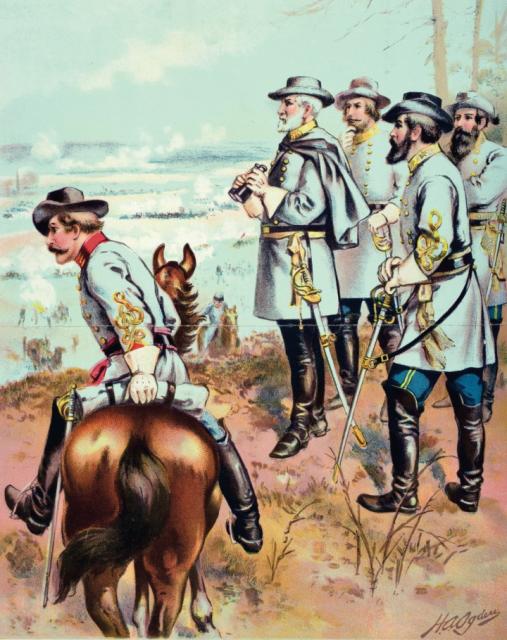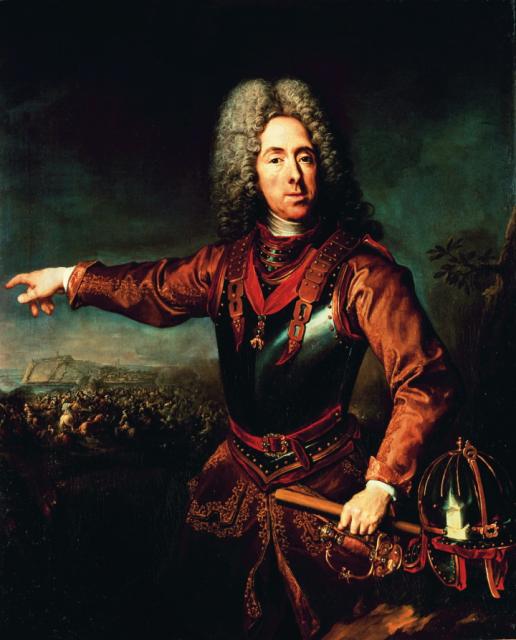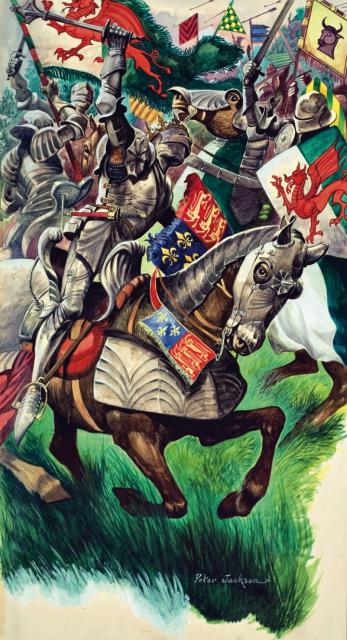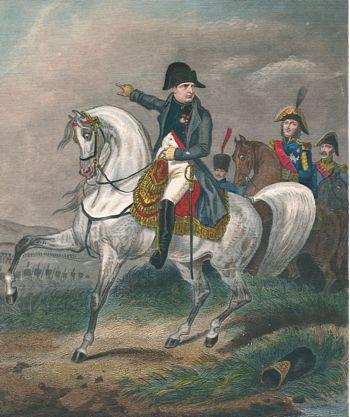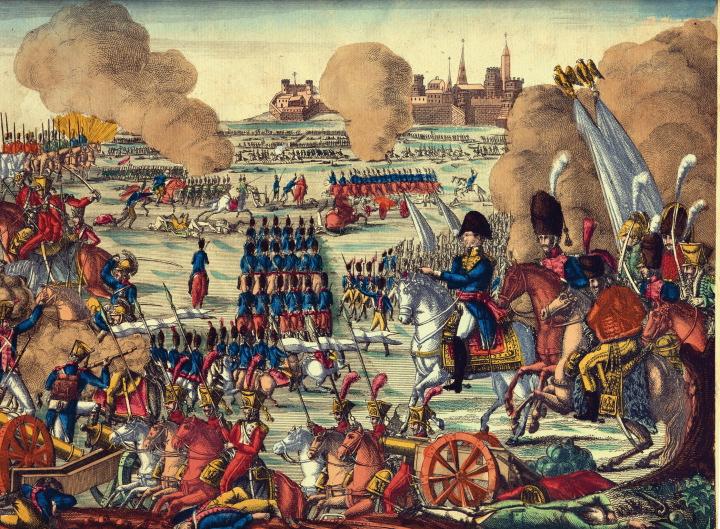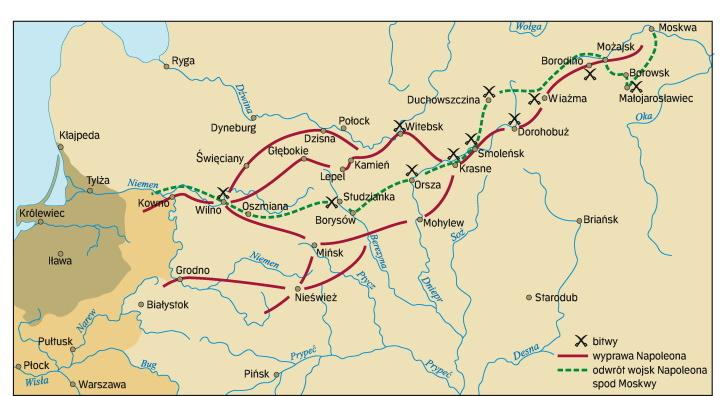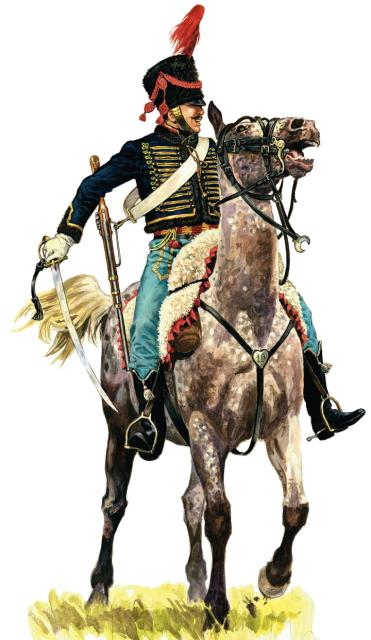https://ospreypublishing.com/thisweekhistory/
Border clashes, sabotage carried out by German guerrilla units, and high-altitude reconnaissance flights by the Luftwaffe had put a strain on German-Polish relations. Despite the German threat, only 65% of the Polish army was mobilized; France and England pressured Poland not to commit to what they feared would be seen as an act of provocation. German Panzers reached Warsaw in a week. Russia invaded on 17 September, intervening 'to protect its fraternal Byelorussian and Ukrainian population' and acting under secret terms of a recently signed non-aggression pact with Germany. The last Polish resistance was crushed early in October and the country was partitioned.
For the German Army this campaign was a necessary trial of new technology, organization and training, and above all of a new tactical doctrine of mechanized, combined arms warfare. The significance of this in the campaign's rapid success was generally underrated at the time, as was the effectiveness of the Polish Army's gallant but hopeless resistance. However, the German achievement was fully appreciated by a few more perceptive observers, amongst whom the term 'Blitzkrieg' was coined. This became established currency a few months later as the doctrine, improved by lessons learned in Poland, was applied so devastatingly in the invasions of the Netherlands, Belgium and France.


Almost exactly five years later, on 2 September, a future president of the United States (and the future father of a president) was the pilot of one of four TBM Avengers in a raid on Japanese installations on Chi Chi Jima. Lieutenant (Junior Grade) George Bush's plane was hit by antiaircraft fire but he completed his attack and was on target with a number of bombs. His engine burning, he flew several miles from the island, then bailed out with one other crew member. For this action, Bush was awarded the Distinguished Flying Cross. For more information about George Bush and his fellow pilots, Warrior 52:
US Naval Aviator 1941-45 examines service life and wartime experiences in all three types of carrier squadron vividly portraying what it was like to fly and fight for the US Navy.
Further readingEssential Histories 35:
The Second World War (2) Europe 1939-1943 details the events running up to 1 September 1939, and places the invasion of Poland in context. Alternatively turn to Essential Histories Specials:
The Second World War: A world in flames which combines all six Essential Histories on World War II. Campaign 107:
Poland 1939 The birth of Blitzkrieg (extract below) gives a full account of this astonishing month, demonstrating the success and failings of the new German method of war, and giving full credit to the Polish Army for its stubborn defence which inflicted over 10,000 casualties on the Germans. For the subsequent blitzkrieg attack on France, see Campaign 3:
France 1940 Blitzkrieg in the West, and Fortress 10:
The Maginot Line 1928-45 is a study of the fortifications that failed to save France.
Warrior 46:
Panzer Crewman 1939-45 looks at the recruitment, training and service conditions of the men on the front line of the Blitzkrieg, assessing their combat experience across all the theatres of World War II. The German invasion force totalled 53 divisions, of which 37 were infantry, Warrior 59:
German Infantryman (1) 1933-40, follows 30 Infantry Regiment through the first years of the war, and the extract below details their entry into Poland. Men-at-Arms 311:
The German Army 1939-45 (1) Blitzkrieg and Men-at-Arms 117:
The Polish Army 1939-45 explore the uniforms, insignia, equipment and organisation of the opposing armies. Detailed information about the history, design and deployment of the German tanks used is provided in New Vanguard 26:
German Light Panzers 1932-42, New Vanguard 27:
Panzerkampfwagen III Medium Tank 1936-44 and New Vanguard 28:
Panzerkampfwagen IV Medium Tank 1936-45.
An extract from Campaign 107:
Poland 1939 The birth of Blitzkrieg1 September 1939
The war was scheduled to start at 0445hrs, but in fact began around 0400hrs when the old battleship Schleswig-Holstein slipped its moorings in Danzig and began a bombardment of the neighbouring Polish transit base on Westerplatte. Due to treaty restrictions, the Poles were forbidden from fortifying the peninsula, but in fact had reinforced the walls of many buildings. As a result, the small garrison was able to hold out for a week in spite of intense bombardment and repeated infantry assaults. Westerplatte was sometimes called the 'Polish Verdun' due to the horrendous pounding the tenacious defenders received during the first week of fighting.
The remnants of the Polish fleet were smothered by German air attack. The submarine flotilla dispersed into the Baltic to lay mines and hunt for coastal transports, while the only remaining major surface combatants - the destroyer Wicherand the minelayer Gryf - began mine-laying operations off the coast. The small naval air detachment was wiped out in air raids during the first few days of fighting. On 3 September, the Kriegsmarine sent two destroyers towards the Polish naval facilities, but they were damaged by gunfire from the coastal guns at Hel and gunfire from Wicher and Gryf. The Luftwaffe responded with a highly effective air raid, which sank Poland's two remaining major warships. The smaller coastal minelayers escaped the air raids until 16 September when they were finally sunk.
Fighting in the port city of Danzig was conducted by paramilitary units on both sides and was especially savage. Workers in the Polish post office barricaded the building but were eventually overwhelmed by the SS Heimwehr Danzig supported by marines and paramilitary units. Many of the workers were shot after surrendering.
Luftwaffe operations along the coast were constrained by dense early morning fog in many areas. The initial German attack across the Pomeranian corridor was preceded by efforts to seize key rail bridges and stations along the Chojnice-Tczew line. At 0430hrs, Stukas from 3/1 Stuka Geschwader bombed the key Tczew bridge in the Pomeranian corridor, hoping to disarm the demolition charges, but the mission failed. The Wehrmacht then attempted to sneak several armoured assault cars into the station behind the daily civilian transit train. However, the Poles were ready, having been alerted by the premature Stuka attack, and they set off the demolition charges, dropping the bridge. The attack on Chojnice was spearheaded by an armoured train but was beaten back.
The Polish forces of Army Pomorze in the Pomeranian corridor consisted of two infantry divisions and a cavalry brigade. Their deployment was more political than tactical, since Warsaw feared that the Germans might attempt to seize the corridor as they had the Sudetenland in actions short of a full-scale war. The Polish units were positioned to make sure that any German actions would by resisted. Once full-scale war broke out and the German Fourth Army began its assault, their political mission became moot, and they began a fighting withdrawal southward to more defensible positions. In the rearguard, the Pomorska Cavalry Brigade fought a day-long series of engagements with the German 20th Motorised Infantry Division along the Brda Rivers, prompting the German commander to request permission to withdraw 'before intense cavalry pressure'. In the late afternoon, the commander of the 18th Lancer regiment, Col K. Mastelarz, led two understrength squadrons in a raid behind the lines. Galloping out of the forest, they caught a German infantry battalion in the open and mounted a successful sabre charge that decimated the startled German formation. Towards the end of the skirmish, several German armoured cars arrived and began firing at the mounted troops. About 20 troopers were killed including the commander before the cavalry could withdraw. The following day, Italian war correspondents were brought to the scene and were told that the troopers had been killed while charging tanks. The story became more embellished with every retelling, becoming a staple of German propaganda and the most enduring myth of the Polish campaign. In spite of the cavalry's defence, the 3rd Panzer Division was able to secure an unopposed crossing over the Brda Rivers.
While the Fourth Army was fighting its way across the Pomeranian corridor, the German Third Army in East Prussia began the first attacks southward towards Warsaw. Two corps began the assault, which soon became entangled in the Mlawa fortification line. Mlawa was one of the few locations with any significant modern fortifications, as it was the obvious approach route to Warsaw from the north. Two German divisions of the 1st Corps conducted the assault with the support of tanks from the Kempf Panzer Division. Manned by the Polish 20th Infantry Division, the fortifications held out against repeated assaults. In the meantime, the Wodrig Corps attempted to skirt around the Mlawa defences to the east, attacking the right wing of the 20th Infantry Division with two infantry divisions. However, the fortifications were situated with swampy ground on either side. Curiously enough, the defensive positions of the Mazowiecka Cavalry Brigade along the Ulatkowka River were attacked by the sole German cavalry unit, the 1st Cavalry Brigade, in one of the few cavalry-versus-cavalry battles of the war. While there were some skirmishes between mounted patrols, most of the fighting was dismounted. By the end of the first day of fighting, the German Third Army was stalled.
The driving force in the Wehrmacht's assault on Poland was Rundstedt's Army Group South, especially its two northern elements, the Eight and Tenth Armies in Silesia. These formations were intended to crash through the opposing Army Lodz and Army Krakow, cross the Warta River, envelope the Polish forces along the western frontier and drive on Warsaw. As a result, these two armies had a disproportionate share of the Panzer and light divisions. The opening phase was largely uneventful, as the main Polish defensive line was in the scattered forests about 32km (20 miles) from the frontier. The most intense battle in this sector occurred around the village of Mokra, which was held by the Wolynska Cavalry Brigade. Despite repeated attacks by the 4th Panzer Division during the day, the cavalry held its ground and inflicted significant losses. The German tank attacks were poorly co-ordinated with the accompanying infantry; a reflection of the novelty of massed tank operations and the difficulty of putting the new doctrine into practice. At least one of the German attacks was repulsed with the assistance of the armoured train Smialy in one of several encounters between Panzers and armoured trains during the campaign. Stuka attacks against the brigade's rear area caused serious losses of horses and supplies, but were unsuccessful in breaking Polish resistance. If the defence of Mokra was proof of the excellent training and morale of the cavalry, it was also evidence of its shortcomings in contemporary conflict. Casualties were so high that the brigade was forced to withdraw that evening, with the 4th Panzer Division on its heels.
The Germans had greater success against Army Krakow to the south. Army Krakow had one of the most difficult tasks of the Polish higher formations, facing the heaviest concentration of German divisions including most of its mechanised forces; four Panzer divisions and four light divisions. In addition, its sector spanned an area from the Upper Silesian industrial region to the Carpathian foothills in the south. While the Wolynska Cavalry Brigade was preoccupied with the main assault against its positions around Mokra, the 1st Panzer Division drove a wedge between it and the Polish 7th Infantry Division to its south. This division was attacked frontally by the German 46th Infantry Division, and its southern flank was threatened when the 2nd Light Division pushed into the defences of the Krakowska Cavalry Brigade. Two more German infantry divisions were ready to reinforce the assault on the hapless 7th Infantry Division. Less progress was enjoyed to the south when the 8th and 239th Infantry Divisions assaulted the fortified zone around the industrial city of Katowice. The neighbouring 28th Infantry Division and 5th Panzer Division struck the Polish 55th and 6th Infantry Divisions.
Aside from the regular military operations, there was considerable turmoil in the rear areas due to the operations of German guerrilla units that had been formed prior to the war by the Abwehr (Military Intelligence). Silesia had a sizeable pro-Nazi German minority and there were numerous small-scale skirmishes between regular Polish army units, police and German guerrilla groups.
The 22nd Panzer Corps, operating out of Slovakia, began a determined attack on Polish mountain defences along the Dunajec River. The 2nd Panzer Division manoeuvred its way past the Polish Dunajec line, held mainly by KOP border troops, obliging Army Krakow to commit its mechanised reserve, the 10th Mechanised Brigade. The German advance was finally stopped later in the day when reinforcements arrived in the shape of units of the Polish 6th Infantry Division. The German 1st and 2nd Mountain Divisions, supported by Slovak units, began attempts to cross the Carpathian mountains in the Army Karpaty sector. No serious gains were made on 1 September due to the difficulty of the terrain.
The men of 30 Infantry Regiment had arrived in Landsberg after leaving the depot. Few Germans expected Hitler's threats to Poland to result in war, especially after the bloodless victory of the Sudetenland the previous year. However, the officers and NCOs made sure that everything that could be done was so done before H-hour. The men were paraded in battle order and all their kit checked.
The night before the attack it was quite clear to everyone that this time Hitler's political gamble would not pay off: the army would be fighting the next morning. Very few men were able to sleep with the thought of battle running through their minds, particularly the perennial fear of infantrymen - wounds. This young army was 'more afraid of debilitating wounds and especially blindness than it was of death: death only happened to other people anyway.' As dawn approached the men of 30 Regiment heard aircraft overhead. The Luftwaffe had co-ordinated its arrival over the border at just the right moment, for, as the infantry moved off, they heard and saw the bombing on the horizon before them. 'Explosions from bombs dropped on Polish concentration areas sent black plumes of smoke into the sky, and we were pleased that it was our air force.' (Altenstadt)
As the tanks and mobile infantry sped ahead, the infantrymen concentrated on their main task: much marching and some combat. Although trained to march long distances, they nevertheless became more and more tired: 'The weight of the equipment we were carrying was also a burden, one which we could not relieve. Machine gunners felt that their weapons were wearing a permanent groove in their shoulders, ammunition carriers felt their arms were getting longer, or their necks were worn raw from the carrying straps for the ammunition boxes.' Their feet began to swell with the heat, the sweat and the marching.
Only one concession had been made to the infantry of this period, which was that packs and heavier equipment were carried in horse-drawn carts which followed their platoons. The horse was still much more a part of the German army at this time, and there were very few truly motorised divisions. Most of the fighting infantry went into battle on foot, and in the whole division, only a few staff officers had cars; the only motorised units were the anti-tank gun platoons.
One factor which sustained the men was their food. Each company had a field kitchen attached to it, and these antiquated but essential devices were always ready, especially with the midday meal. As the battalion came to the end of the morning's march, 'every man's spirit rose at the thought of hot food and coffee. The men moved off the roads, the platoon and company wagons, plus all the accumulated transport moved into air concealment positions, and for an hour or so, things were good.' The fact that the Luftwaffe had complete air superiority helped.
The reasonably mild weather of September 1939 meant that the troops marching east in the wake of the advancing tank divisions only saw clouds of dust ahead of them, which became more distant as the day went on. However, Polish resistance had not ended, and as they advanced they occasionally came under fire from rearguard enemy soldiers who fought bravely.
As soon as they were fired on, reconnaissance troops in the advance guard reported back to company headquarters. Following their intensive training, when the German troops were ordered into the attack they did so unhesitatingly. 'Light machine guns fired on the enemy positions - often a trench in a farm yard, or a few men behind a hedgerow - winning the fire fight. Then the assault infantry went in, and soon more Polish troops were removed from the field of battle.'
Up to this time the advance had been almost undisturbed, with few alarms or stops caused by the Poles. The march was seemingly never ending. They had begun their long walk on 1 September at dawn, and on 12 September had marched in the wake of the Panzer divisions, for over 150 miles. They were starting every day at dawn, and stopping only as night fell, marching all day with 20 minute breaks every two hours. The dust of the primitive roads meant constant attention to weapons was essential.
'We were fed from field kitchens at around midday, and again in the early evening: otherwise it was march, march and keep on marching. We never came up to the tanks which were very soon twenty or more miles in front of us.' (Altenstadt) Dust covered the men, mixing with their sweat to form a hard pancake on their faces and any other exposed skin.










